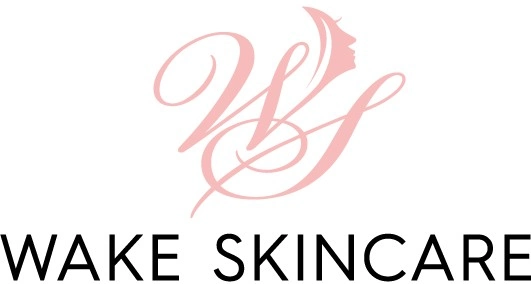Summary:
Understanding Your Skin Type: The Foundation of Effective Skincare
Before diving into specific routines, you need to accurately identify your skin type. Most people get this wrong, which explains why so many skincare routines fail to deliver results.
Your skin type is determined by how much oil your skin produces, its sensitivity level, and its overall condition. This isn’t something that changes daily based on how your skin feels—it’s your skin’s baseline behavior when it’s healthy and balanced.
The most reliable way to determine your skin type is through professional analysis, but you can start with a simple at-home test. Wash your face with a gentle cleanser, pat it dry, and wait an hour without applying any products. Then, observe how your skin looks and feels across different areas of your face.
Normal Skin: The Balanced Approach
Normal skin is well-balanced, rarely experiences breakouts, and doesn’t feel overly oily or dry throughout the day. If you have normal skin, you’ve won the genetic lottery, but that doesn’t mean you can skip a proper routine.
Your morning routine should start with a gentle cleanser to remove overnight buildup without stripping your skin’s natural barrier. Follow with a lightweight moisturizer that maintains your skin’s balance, and always finish with broad-spectrum sunscreen—this is non-negotiable regardless of your skin type.
Evening routines for normal skin can include gentle exfoliation 2-3 times per week using either chemical exfoliants like glycolic acid or physical exfoliants like microdermabrasion. A quality night moisturizer will help your skin repair itself while you sleep. The key with normal skin is maintaining what’s already working well rather than trying to fix problems that don’t exist.
Since normal skin tolerates most ingredients well, you can incorporate targeted treatments for specific concerns like vitamin C for brightness or retinol for anti-aging prevention. Just remember to introduce new products gradually and pay attention to how your skin responds.
Oily Skin: Managing Excess Oil Without Over-Drying
Oily skin produces excess sebum, leading to a shiny appearance, enlarged pores, and frequent breakouts. The biggest mistake people with oily skin make is trying to strip away all the oil, which actually triggers more oil production.
Your morning routine should include a gentle foaming cleanser that removes excess oil without being harsh. Look for ingredients like salicylic acid, which penetrates pores to clear out buildup. Follow with a lightweight, oil-free moisturizer—yes, oily skin still needs moisture. Skipping moisturizer signals your skin to produce even more oil to compensate.
Sunscreen is crucial but choose a mineral-based, non-comedogenic formula that won’t clog your pores. Many people with oily skin avoid sunscreen because they’re worried about additional shine, but sun damage actually makes oily skin problems worse over time.
Evening routines for oily skin can be more intensive. Double cleansing—starting with an oil-based cleanser followed by your regular cleanser—effectively removes makeup, sunscreen, and excess oil without over-cleansing. Incorporate treatments like niacinamide to regulate oil production and benzoyl peroxide or salicylic acid for acne prevention.
Professional treatments like deep-cleansing facials, chemical peels, and microdermabrasion can be particularly beneficial for oily skin types. These treatments help clear congested pores and reduce the appearance of enlarged pores that often accompany excess oil production.
Specialized Routines for Dry and Combination Skin Types
Dry and combination skin types require more nuanced approaches since they deal with multiple concerns simultaneously. Understanding how to address these varying needs across different areas of your face is key to building an effective routine.
Dry skin lacks adequate oil production and often feels tight, rough, or flaky. Combination skin presents the challenge of managing both oily and dry areas on the same face, typically with an oily T-zone and drier cheeks.
Both skin types benefit from gentle, hydrating approaches, but the specific products and application methods differ based on your skin’s unique needs and the severity of dryness or oil production in different facial zones.
Dry Skin: Intensive Hydration and Barrier Repair
Dry skin needs intensive hydration and barrier repair to function properly. The goal is to add moisture back into your skin while preventing water loss throughout the day.
Start your morning routine with a creamy, non-foaming cleanser that won’t strip your skin’s natural oils. Immediately follow with a hydrating toner or essence to add an extra layer of moisture. Your moisturizer should be rich and contain ingredients like hyaluronic acid, ceramides, or glycerin to attract and hold moisture in your skin.
Don’t forget sunscreen, but choose a moisturizing formula that doubles as your final hydrating step. Many people with dry skin benefit from facial oils applied before or mixed with their moisturizer for extra nourishment.
Evening routines for dry skin should focus on repair and intensive hydration. Use a gentle cleansing oil or balm to remove makeup and sunscreen, followed by your regular creamy cleanser. Apply treatments like hyaluronic acid serums or peptide creams while your skin is still slightly damp to lock in moisture.
Night moisturizers for dry skin should be richer than your daytime formula. Look for ingredients like squalane, shea butter, or ceramides that help repair your skin’s barrier overnight. Professional treatments like hydrating facials, enzyme peels, or LED light therapy can provide the intensive moisture boost that dry skin craves.
Combination Skin: Targeted Treatment for Different Zones
Combination skin requires a strategic approach since you’re essentially caring for two different skin types on one face. The key is learning to treat different areas according to their specific needs without overcomplicating your routine.
Your morning routine should start with a gentle cleanser that works for both oily and dry areas—usually a low-pH, balanced formula that cleans without stripping. Apply a lightweight moisturizer all over, but you might need to use a slightly richer formula on dry areas like your cheeks.
For sunscreen, choose a formula that works well on both oily and dry areas. Mineral sunscreens often work well for combination skin since they don’t add extra oil but also don’t dry out already-dry areas.
Evening routines for combination skin can include targeted treatments. Use oil-controlling ingredients like salicylic acid or niacinamide on your T-zone, while applying hydrating serums or treatments to drier areas. You might even use two different moisturizers—a lighter one for oily areas and a richer one for dry zones.
Professional treatments for combination skin often involve customized facials that address different areas with appropriate techniques. We might use deeper cleansing methods on oily zones while focusing on hydration and gentle exfoliation on drier areas. This personalized approach ensures each part of your face gets exactly what it needs.
Building Your Perfect Skincare Routine with Professional Guidance
Understanding your skin type is just the beginning. The most effective skincare routines are built through professional guidance that takes into account not just your skin type, but your specific concerns, lifestyle, and goals.
Working with a licensed esthetician helps you avoid the trial-and-error approach that wastes time and money while potentially damaging your skin. Professional skin analysis reveals details you might miss on your own, and expert guidance ensures you’re using the right products in the correct order and frequency.
Whether you’re dealing with persistent acne, signs of aging, sensitivity issues, or just want to maintain healthy skin, the right professional support makes all the difference. We offer comprehensive consultations to help you build a routine that delivers real results for your unique skin type and concerns.




